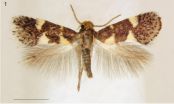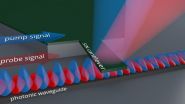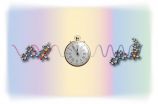'Alzheimer's protein' plays role in maintaining eye health and muscle strength
New research in The FASEB Journal shows that the amyloid precursor protein binds to other proteins, FE65 and FE65L1, to facilitate eye and muscle health
2015-06-09
(Press-News.org) Amyloid precursor protein (APP), a key protein implicated in the development Alzheimer's disease, may play an important role in eye and muscle health. In a new report published in the June 2015 issue of The FASEB Journal, scientists have discovered that when proteins that bind to the APP, called FE65 and FE65L1, are deleted, they cause cataracts and muscle weakness in mice. Additionally, this study demonstrates that the expression of laminin, a protein pivotal for the interaction between lens epithelial cells and the lens capsule, is severely altered in mice lenses missing both FE65 and FE65L1 genes. If confirmed in human studies, the FE65 and FE65L1 proteins may become a therapeutic target for cataracts, muscular dystrophy and Alzheimer's disease.
"We hope the discoveries in this study would help to expand our understanding of the normal function of FE65 and APP," said Jaehong Suh, Ph.D., a researcher involved in the work from the Genetics and Aging Research Unit, MassGeneral Institute for Neurodegenerative Disease at Massachusetts General Hospital in Boston, MA. "From this kind of very basic research, we may be able to find more clues for the causes of, and ultimately to discover effective treatments for related human diseases such as cataract, congenital muscular dystrophies and Alzheimer's disease."
To make their discovery, Suh and colleagues examined and compared the eyes and muscles of four different mouse groups: one without the FE65 protein, one without FE65L1, one without both FE65 and FE65L1, and one that was normal control mice. They found that mice lacking both FE65 and FE65L1 develop severe lens degeneration that may be an extreme manifestation of cataract and muscle weakness. Milder deficits in muscle were found in the mice with only one gene deleted, while no changes were seen in the normal mice. Interestingly, cortical cataracts were observed in old mice lacking the FE65L1 protein.
"It's rare that in any living system, one gene or one protein performs only one function," said Gerald Weissmann, M.D., Editor-in-Chief of The FASEB Journal. "Although this is a new find, the fact that a protein implicated in Alzheimer's disease has a function in tissues other than the brain should come as no surprise--but APP's function in the eye is unexpected!"
INFORMATION:
Receive monthly highlights from The FASEB Journal by e-mail. Sign up at http://www.faseb.org/fjupdate.aspx. The FASEB Journal is published by the Federation of the American Societies for Experimental Biology (FASEB). It is the world's most cited biology journal according to the Institute for Scientific Information and has been recognized by the Special Libraries Association as one of the top 100 most influential biomedical journals of the past century.
FASEB is composed of 27 societies with more than 120,000 members, making it the largest coalition of biomedical research associations in the United States. Our mission is to advance health and welfare by promoting progress and education in biological and biomedical sciences through service to our member societies and collaborative advocacy.
Details: Jaehong Suh, Juliet A. Moncaster, Lirong Wang, Imran Hafeez, Joachim Herz, Rudolph E. Tanzi, Lee E. Goldstein, and Suzanne Y. Guénette. FE65 and FE65L1 amyloid precursor protein-binding protein compound null mice display adult-onset cataract and muscle weakness. FASEB J. June 2015 29:2628-2639; doi:10.1096/fj.14-261453 ; http://www.fasebj.org/content/29/6/2628.abstract
ELSE PRESS RELEASES FROM THIS DATE:
2015-06-09
Women who have just given birth are often motivated to prevent a rapid, repeat pregnancy. For those who prefer a contraceptive implant, getting the procedure in the hospital immediately after giving birth is more cost-effective than delaying insertion to a 6-8 week postpartum visit, according to a new study by Yale School of Medicine researchers.
Published online ahead of print in the July issue of Obstetrics & Gynecology, the study compares costs associated with immediate implant insertion with costs of unintended pregnancy. The implant is placed in the arm and can ...
2015-06-09
BOSTON... June 9, 2015 - Ben-Gurion University of the Negev (BGU) and Harvard University researchers have developed a technique that measures the correlation between air temperature and birth weight. They evaluated the relationship between birth outcomes (focusing on birth weight) and ambient air temperature during pregnancy in Massachusetts between 2000 and 2008.
"We found that exposure to high air temperature during pregnancy increases the risk of lower birth weight and can cause preterm birth," according to Dr. Itai Kloog, a senior lecturer in BGU's Department of Geography ...
2015-06-09
Since 2011 an unknown leafmining moth was observed in table grape orchards and often in large numbers in the Paarl region of the Western Cape (South Africa).
Although the effect of the leafmines on the grape vine itself appears to be limited, collateral damage may be more serious, especially when larvae descend from the vine canopy to form a dense curtain of suspended larvae. A new study published in ZooKeys looks into the morphology and biology of the potential pest.
Although the leafminer had been seen before in South Africa, it proved impossible to find its name.
Entomologist ...
2015-06-09
A team of Tel Aviv University and UCLA astronomers have discovered a remarkable cluster of more than a million young stars are forming in a hot, dusty cloud of molecular gases in a tiny galaxy very near our own.
The star cluster is buried within a massive gas cloud dubbed "Cloud D" in the NGC 5253 dwarf galaxy, and, although it's a billion times brighter than our sun, is barely visible, hidden by its own hot gases and dust. The star cluster contains more than 7,000 massive "O" stars: the most brilliant stars extant, each a million times more luminous than our sun.
"Cloud ...
2015-06-09
Simon Fraser University PhD graduate Maryam Sadeghi will unveil MoleScope™, an innovative hand-held tool that uses a smartphone to monitor skin for signs of cancer, at the World Congress of Dermatology conference in Vancouver June 9-13.
Sadeghi has spent three years transitioning from academic research to her start-up venture, MetaOptima Technology Inc. MoleScope™, the company's inaugural product, which enables people to monitor their moles and skin health, share images with family and healthcare providers and eventually, connect skin specialists with people ...
2015-06-09
Two young researchers working at the MIPT Laboratory of Nanooptics and Plasmonics, Dmitry Fedyanin and Yury Stebunov, have developed an ultracompact highly sensitive nanomechanical sensor for analyzing the chemical composition of substances and detecting biological objects, such as viral disease markers, which appear when the immune system responds to incurable or hard-to-cure diseases, including HIV, hepatitis, herpes, and many others. The sensor will enable doctors to identify tumor markers, whose presence in the body signals the emergence and growth of cancerous tumors.
The ...
2015-06-09
Two years ago, the Immunology of Diabetes Research Group at the Germans Trias Research Institute (at Universitat Autònoma de Barcelona - Campus of International Excellence Sphere) reported a new experimental immunotherapy that prevented the onset of Type 1 Diabetes in mice predisposed to the disease. This work led to more studies with the support of the Spanish Government, Catalan Government and private patrons with a keen interest in it. Thanks to this, the article published today in PLOS ONE describes a new step towards the creation of a vaccine, which in the medium-term ...
2015-06-09
June 9, 2015 - New approaches, based on body mass index (BMI) or other simple measures, are needed to improve assessment of obesity in adolescents with physical disabilities, reports a paper in the American Journal of Physical Medicine & Rehabilitation, the official journal of the Association of Academic Physiatrists. The journal is published by Wolters Kluwer.
Obesity is a major problem in children and adolescents with mobility limitations, but standard assessments tend to underestimate it, according to the new research by Brooks C. Wingo, PhD, of University of Alabama ...
2015-06-09
Nagoya, Japan - A team of chemists and biologists at the Institute of Transformative Bio-Molecules (ITbM), Nagoya University have succeeded in finding new molecules that change the circadian rhythm in mammals by applying synthetic chemistry methods, which makes use of highly selective metal catalysts.
Most living organisms have a biological clock with an approximately 24-hour circadian rhythm, which regulates important body functions such as sleep/wake cycles, hormone secretion, and metabolism. Disruption of the circadian rhythm by genetic mutations and environmental ...
2015-06-09
LOS ANGELES (JUNE 8, 2015) - The witness on the stand says he saw the accused at the scene of the crime. Is he sure? How sure? The jury's verdict could hinge on that level of certainty.
Many decisions we make every day are influenced by our memories and the confidence we have in them. But very little is known about how we decide whether we can trust a memory or not.
A new Cedars-Sinai study provides some of the answers. Researchers have identified a unique set of neurons in the medial temporal lobe, an area of the brain where memories and memory-based decisions are ...
LAST 30 PRESS RELEASES:
[Press-News.org] 'Alzheimer's protein' plays role in maintaining eye health and muscle strength
New research in The FASEB Journal shows that the amyloid precursor protein binds to other proteins, FE65 and FE65L1, to facilitate eye and muscle health


